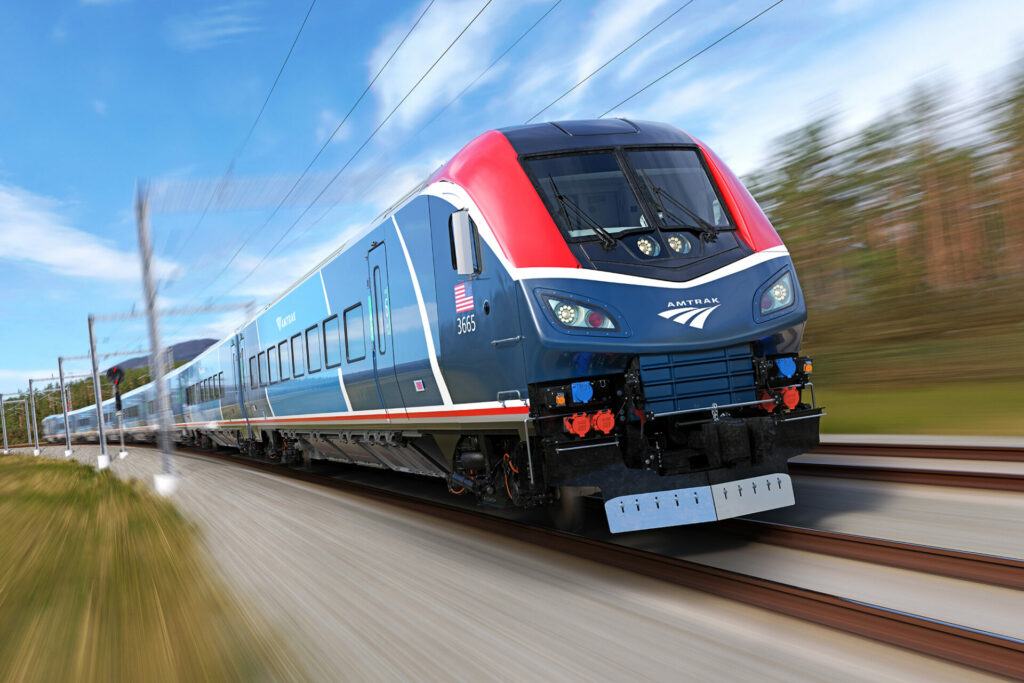For many years, rail travel has taken a backseat in the United States when it comes to long-distance passenger transportation, despite having the world’s longest rail network and largest railway company. However, a remarkable infrastructure project and the involvement of private railway companies could change this narrative and lead to a railroad renaissance. Let’s delve into the past and glimpse into the future of railways in North America.
When you think of mobility in North America, what comes to mind? Perhaps endless highways dotted with colossal trucks, urban congestion with yellow cabs and classic American cars like Buicks and Chevrolets, or massive airports handling half of the world’s air traffic. Not to forget the iconic Greyhound buses, acquired by the German mobility provider FlixMobility in 2021.
But rail travel? That usually comes to mind much later. Why is that? With over half a billion people residing in 23 states across North America, the distances are vast. Yet, it remains a nation of motorists, despite railways having a history almost as long as in Europe.
The Origins of Railways in North America
The first railway line in the USA was inaugurated in Quincy, Massachusetts in 1826, just a year after the world’s first 40-kilometer line between Stockton and Darlington in England. A significant milestone occurred in 1869 with the completion of the first transcontinental railway in America.
This marked the beginning of an era of unparalleled economic growth. Railways revolutionized the transportation of goods and people, significantly contributing to the acceleration of the industrial revolution in North America. Companies like the Union Pacific Railroad and the Central Pacific Railroad became economic giants of their time.
This era also brought about profound social impacts. Railways facilitated migration and expansion into new territories. Cities situated at crucial railway junctions, such as Chicago and Denver, experienced explosive growth.
Challenges in the 20th Century: Amtrak Consolidates Passenger Traffic
However, with the advent of automobiles in the 1930s, the demand for rail travel declined. Railways were utilized for troop and material transportation during World War II, but by the 1950s, air travel gained popularity, and highways proliferated. Passenger train travel gradually diminished. Despite having a rail network of 397,232 miles in 1950 compared to 224,511 miles of roads, trains accounted for less than ten percent of intercity passenger traffic by 1983.
In 1970, a pivotal shift occurred with the separation of freight and passenger traffic. The National Railroad Passenger Corporation, known as Amtrak, was established. This semi-governmental organization gradually assumed all passenger train services, allowing other rail lines to focus on more profitable freight operations.
Initially, Amtrak saw success as train travel increased due to the oil crisis. However, the resurgence was short-lived as Americans reverted to automobiles and airplanes. While trains handled 95 percent of intercity passenger traffic in 1910, by 1983, their share had dropped to below ten percent. Nevertheless, Amtrak’s fortunes changed again in the 2000s. Between 2003 and 2019, passenger numbers increased by 45 percent to reach 32.3 million. By the fiscal year 2023, passenger numbers approached pre-COVID levels at 28.3 million.
A significant contributor to this success is likely a specific route:
From Boston to Washington: The Northeast Corridor (NEC)
The NEC, one of eleven and the busiest railway corridors in the United States, spans 734 kilometers, connecting five major metropolitan regions: Boston, New York, Philadelphia, Baltimore, and Washington.
An astounding 800,000 passengers travel on the NEC trains daily, transporting five times more passengers than all flights between Washington and New York combined. With the Acela, the journey takes less than three hours, reaching speeds of up to 240 km/h.

Insufficient Network and Long Wait Times
However, many regions and major cities remain disconnected from the railway network. Numerous connections have been cut, with metropolitan areas like Las Vegas, Phoenix, and Nashville lacking any rail links. One contributing factor is a government policy since 2007 that only subsidizes new rail lines if they are at least 750 miles long, a stark contrast to the Highway Trust, which covers 90 percent of highway construction costs.
In major cities such as Houston, Atlanta and Cincinnati, trains only run once a day in each direction, often in the middle of the night and with considerable delays. Even though passenger trains have priority by law, the reality is different. Amtrak trains are given a time window of one hour to pass through. If they arrive later, they have to give way to the freight trains. This requires patience: freight trains in the USA are on average three kilometres long and travel at around 40 km/h.
Click through: This interactive map shows the different passenger lines in North America
Bipartisan Infrastructure Law (BIL): Historic Investment in Infrastructure Drives Railroad Renaissance
In November 2021, the US Congress passed a landmark infrastructure program. Then President Biden, a vocal supporter of railways, spearheaded the Infrastructure Investment and Jobs Act (IIJA), also known as the Bipartisan Infrastructure Law (BIL).
The total allocation for the BIL is around $1.2 trillion, with an additional $550 billion allocated beyond the regular congressional budget.
Approximately $102 billion is earmarked for rail transportation, including $39 billion for public transit and $66 billion for intercity travel. Not all investments are directed towards new routes. In November 2023, it was announced that over $16 billion would be invested in modernizing critical infrastructure along the Northeast Corridor.
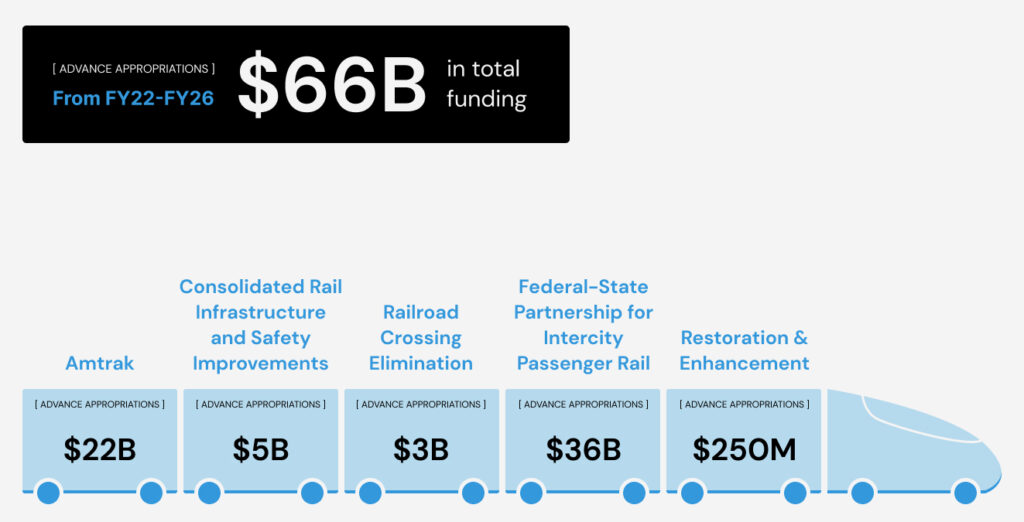
For the time being, the funds for new railway lines are awarded via the Federal-State Partnership for Intercity Passenger Rail programme. Click here for an overview of corresponding projects.
It remains to be seen whether this course will be maintained under the renewed presidency of Donald Trump. Environmental reasons are less likely to motivate him to do so: On the very day he took office again in 2025, Trump announced his withdrawal from the Paris climate protection agreement.
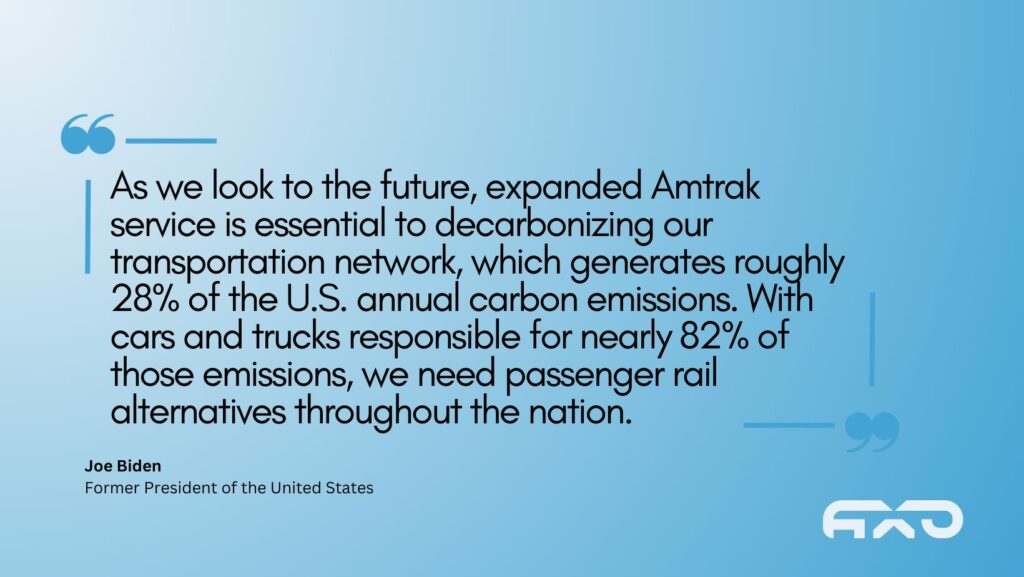
Railroad Renaissance: Private Passenger Rail Company Sets New Standards
However, the revival of passenger rail travel doesn’t solely rest on Amtrak. Brightline, a private railway company, has re-entered the competition after over a century. Owned by Florida East Coast Industries (FECI), a subsidiary of Fortress Investment Group LLC, Brightline is already setting new benchmarks.
Their flagship achievement came in September 2023, with the inaugural run of the first colorful ICE train on the approximately 380-kilometer route from Orlando to Miami, Florida, reaching speeds of up to 200 km/h.
Regular stops include West Palm Beach and Fort Lauderdale, with plans for an extension to Tampa, including a stop at Disney World. The line could potentially be extended to Jacksonville, connecting Florida’s major tourist centers with a single rail link.

Being part of FECI is a major advantage here: a large part of the existing track can be used by the parent company. Only to connect the airport in Orlando did 64 kilometres of new track have to be laid.
The trains consist of two diesel-electric locomotives and four large-capacity carriages. They were manufactured by Siemens Mobility in Sacramento.
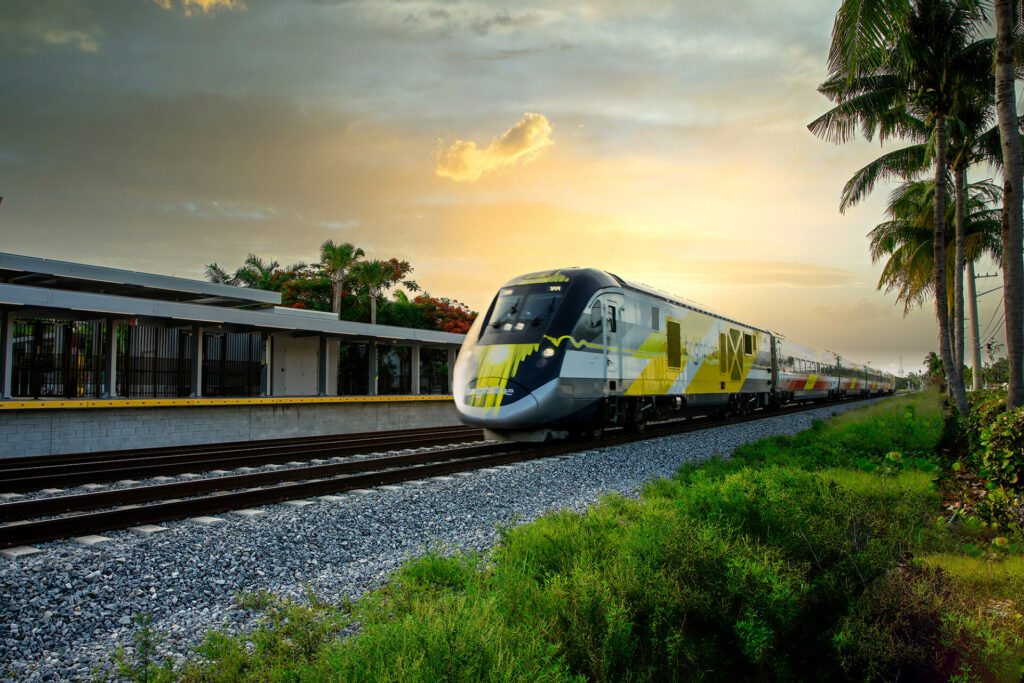
Brightline expects eight million passengers a year on the almost 380-kilometre journey between Florida’s largest tourist centres. According to the timetable, 36 trains run daily. Demand is so high that around 190,000 passengers used the service in the first 70 days. For Europeans, such a fast and comfortable train connection may be normal. In the United States, it is a beacon of innovation. The US author and journalist Tom Zoellner estimates in his book “Train” that around 98 per cent of Americans have never set foot on a commuter train.
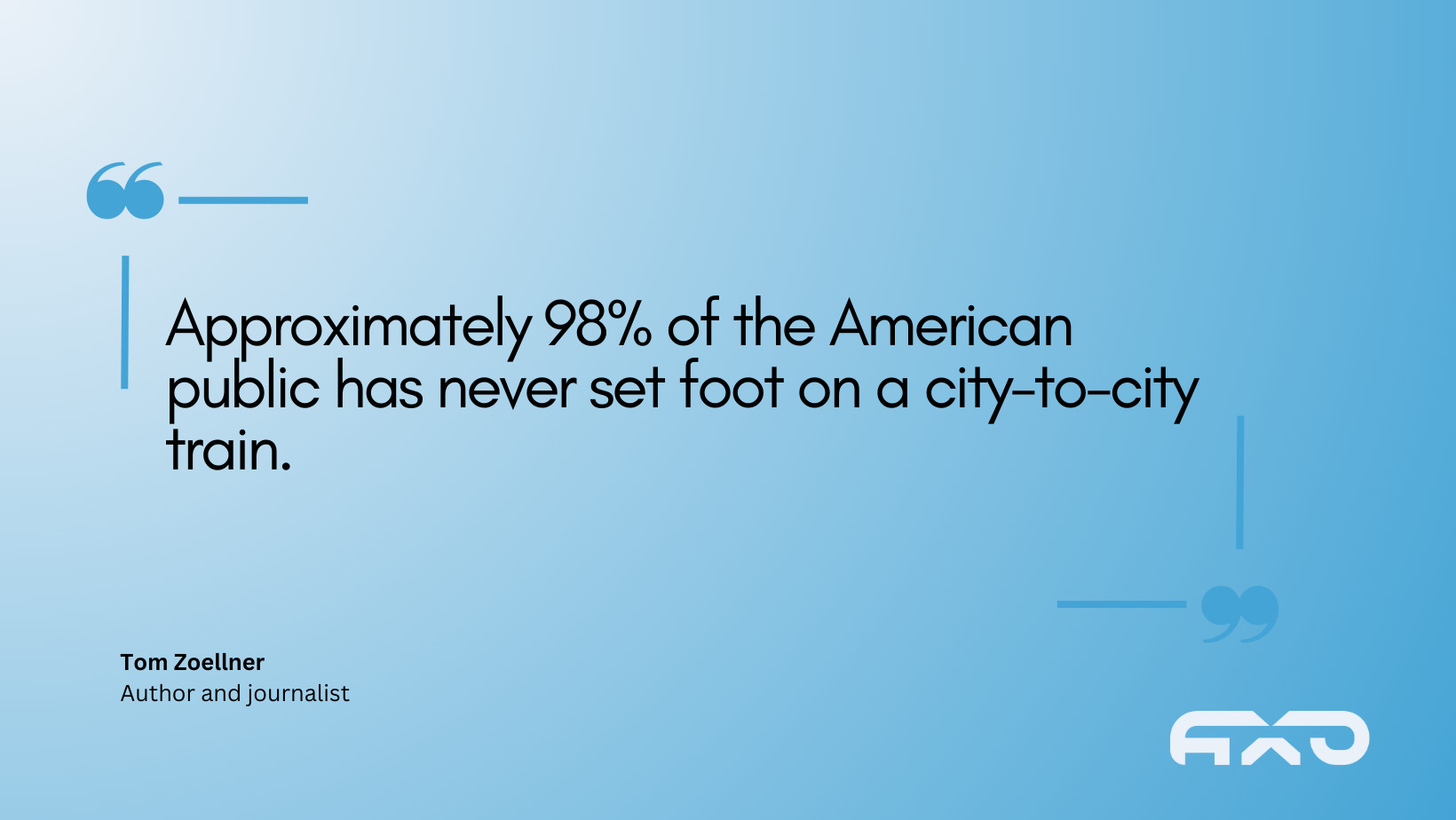
Brightline West: From Las Vegas to Los Angeles
Under the motto “Too long to drive, too short to fly” Brightline is already planning additional routes, primarily to connect cities between 200 and 300 kilometers apart. Construction has already begun on one such route: Brightline West, between Rancho Cucamonga near Las Vegas, Nevada, and Los Angeles, California, featuring speeds of over 320 km/h. The journey, which would take 4:15 hours by car, is expected to take around 2:10 hours by train.
The project costs are estimated at $12 billion, with about a third, $3.75 billion, subsidized. The route will largely run alongside existing highways to minimize land acquisition costs. It will be fully electrified, reducing greenhouse gas emissions by over 400,000 tons of CO2 per year. By shifting car and air travel to Brightline West’s high-speed rail system, over 700 million vehicle kilometers and 16,000 short-haul flights could be saved annually.
The Golden State is Getting on Track
Brightline aims to complete the route before the 2028 Olympic Games in Los Angeles, surpassing a long-planned state project: the California High-Speed Rail.
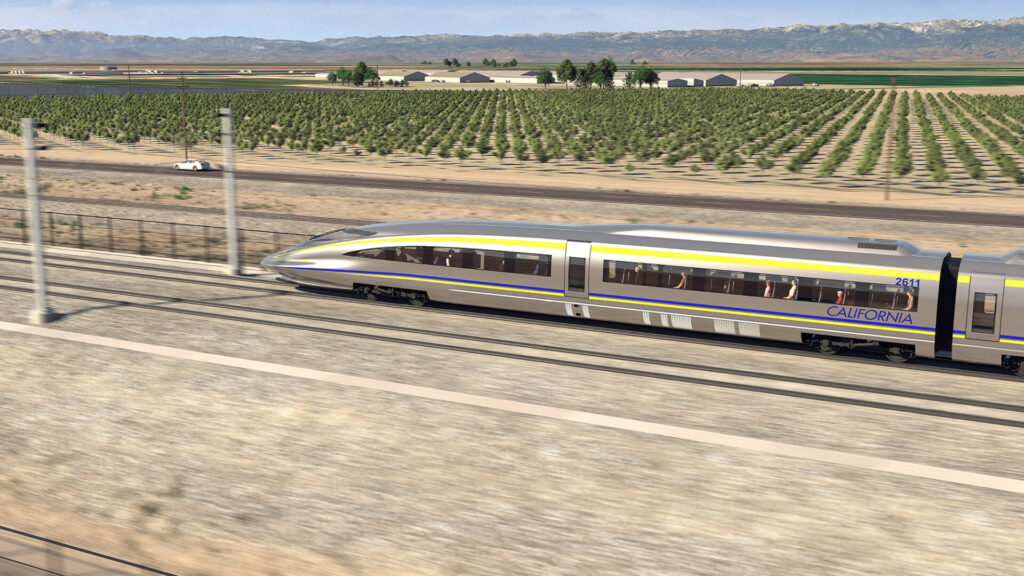
This ambitious project, in the works since 2008, has faced delays from the outset. The over 800-kilometer high-speed rail line aims to connect San Francisco with Los Angeles, with optional extensions to Sacramento and San Diego. Initially, a 275-kilometer core segment between Merced, Fresno, and Bakersfield is being constructed. It is to be hoped that Biden’s infrastructure package will get this project, which has been declared dead in the meantime, up and running – albeit initially with the aid of existing routes as a single-track high-speed line. On the new line the maximum speed will be around 350 km/h.
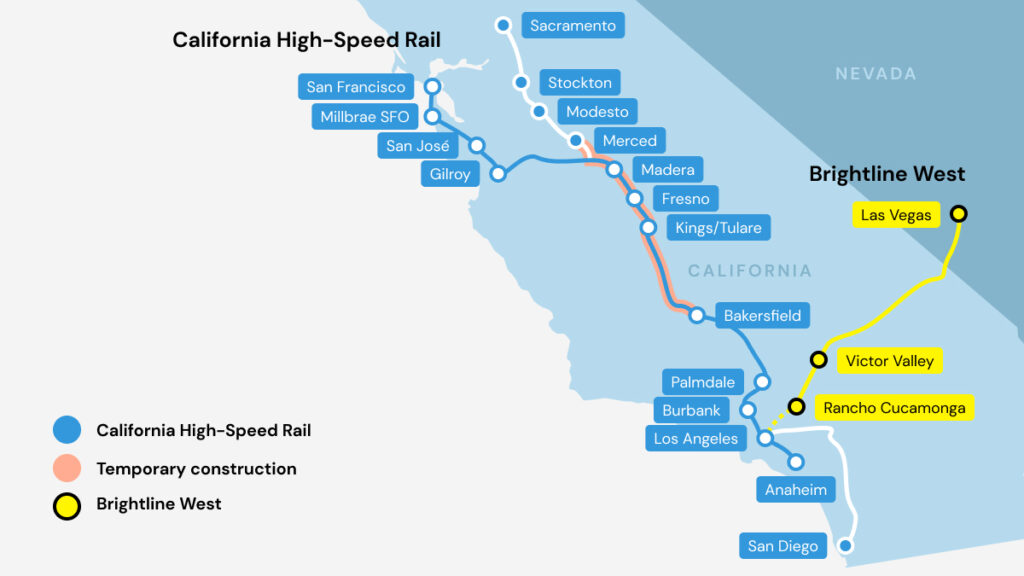
The Railroad Renaissance in North America: Can the USA Become a Rail Nation?
Indeed, with a growing emphasis on sustainable and environmentally friendly transportation methods, railways could experience a renaissance in North America. The Biden administration has recognized this potential and acted accordingly. However, there are still plenty of challenges to overcome. Addressing them will require careful planning, cooperation among various stakeholders, and a long-term commitment to promoting rail transportation and its infrastructure. Ultimately, the population must be willing to embrace rail travel, even on routes traditionally dominated by automobiles. The launch of the Brightline service between Orlando and Miami is a promising start:
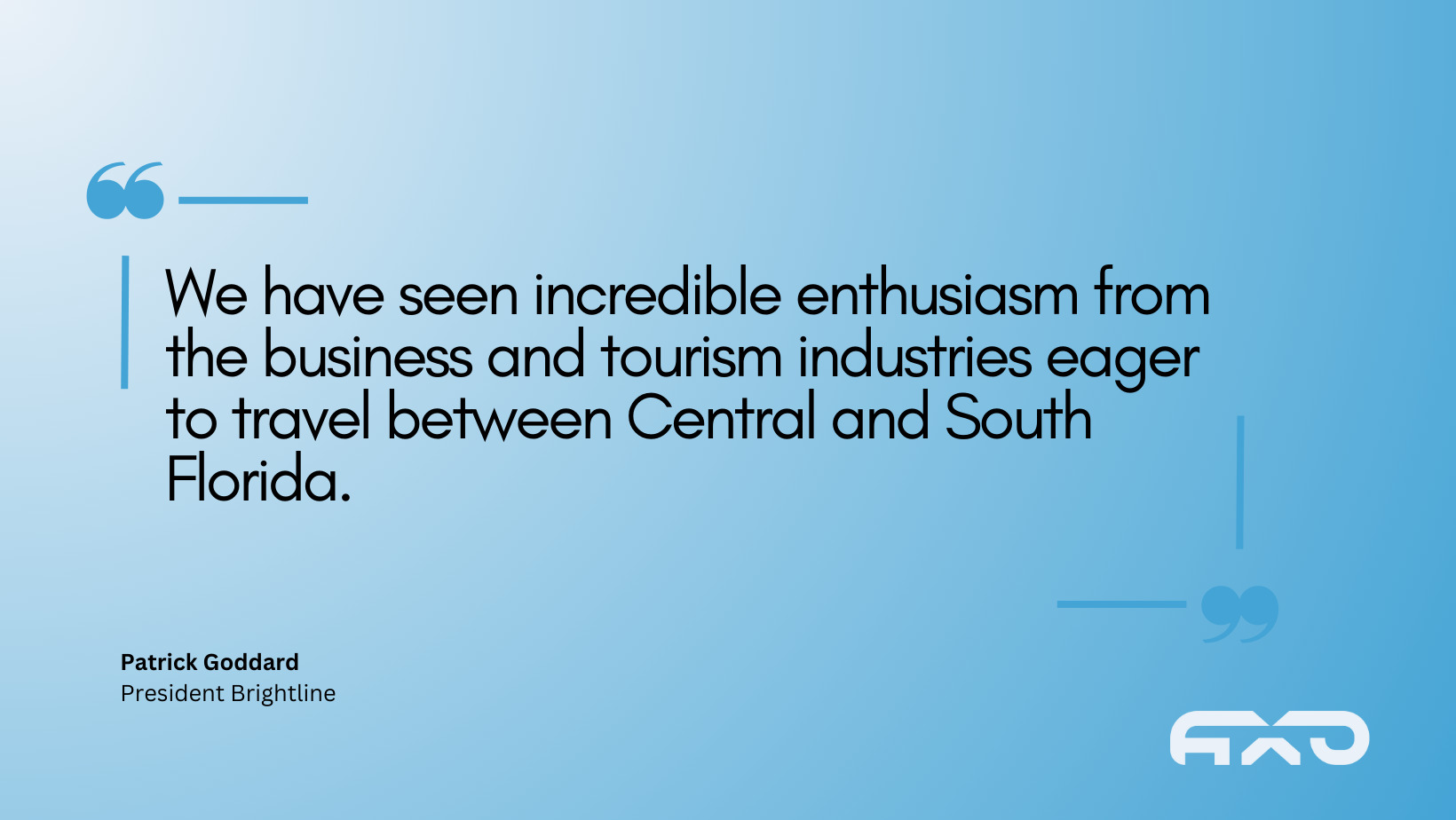
Attention Railway Enthusiasts: Follow us on LinkedIn and enjoy regularly news about the global development of railways.

